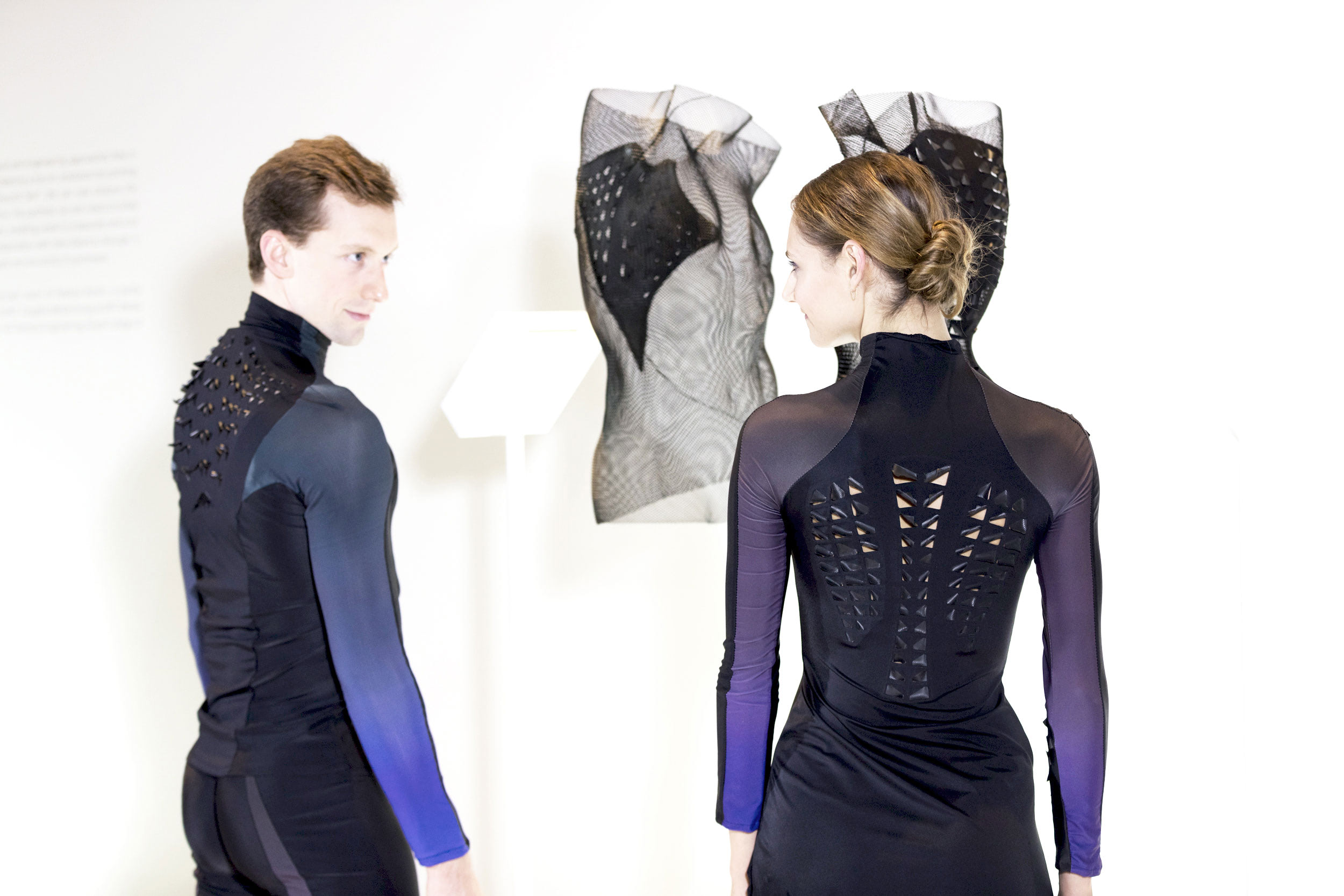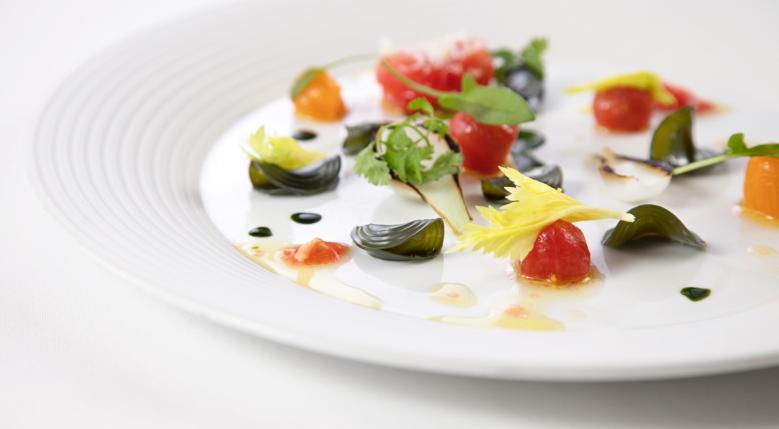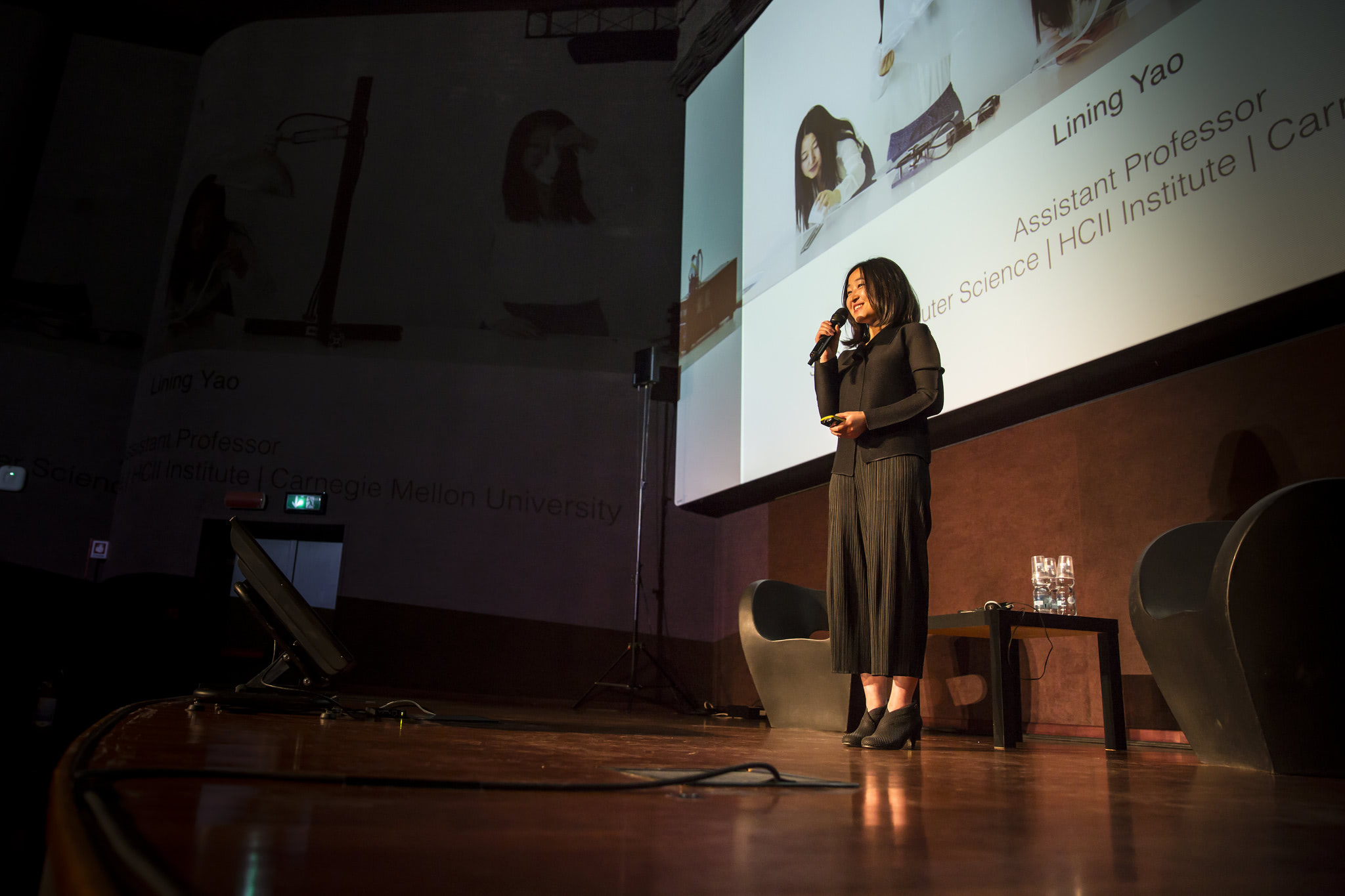Real innovations are high tech but analogic, they are created by mixing biology, genetics and design to save energy and resources. This is the concept behind Lining Yao’s work, Chinese interaction designer and maker of novel materials and interfaces. She recently completed her PhD at Tangible Media Group, MIT Media Lab in Boston, where she focused on pushing Human Computer Interaction towards Human Material Interaction, and she is now Assistant Professor at HCII Institute at Carnegie Mellon University.
We met her in Milan, where she gave a lecture at Meet The Media Guru, the Italian platform that invites innovators from all over the world to share their ideas and projects (last April NNN director Koert van Mensvoort was also their guest).
“I don't have a definition of my work, but I think traditional disciplines have a blurred boundary currently, and we are inventing a new discipline”. Yao operates somewhere between design, engineering and science and uses organic materials as a technology that brings us back to nature, to the original form of life. “I think we could alter nature with technology in a positive way. Going forward, with the same respect to nature as our ancestors did, but with a scientific understanding of nature across scales and from the bottom up. Going forward, we return to nature but a programmable nature”.
Going forward, we return to nature but a programmable nature
Yao takes advantage of the adaptability characteristics that exist in nature to create products that react to different environments, without using energy or electricity. This way even a pinecone can become a smart material. “When the rain wash the pinecones out from the tree to the ground these pinecones are closed, if you pick them up and let them dry they will open, but if you put them back into water they will close again. A little humble pinecone is a nature grown smart material, because it transforms and responds to water opening and closing, and this transformation is reversible and does not need electricity”.
A humble pinecone is a smart material
Similar to how a pinecone behaves, some bacteria called bacillus subtilis natto expand and contract depending on the humidity levels detected in the surrounding air; the more humidity, the bigger the bacteria gets. Yao uses these bacteria as natural actuator to create bioLogic Second Skin, a garment that reacts to the wearer’s sweat opening and closing, “the bacteria expand and contract in the presence of moisture, like nano-engines”.
“On a daily basis we use motors to make things move, responsive and interactive, but how can we learn from nature to build sustainable and smart systems?”. This question drives Yao’s research “Transform Materiality” to explore how to use nature energy stimula to transform material and make them behave smartly.
Everything can be scientifically designed
“Everything, including aesthetic, can be scientifically designed”. The synthetic bio-skin fabric reacts to body heat and sweat, causing flaps around heat zones to open, enabling sweat to evaporate and cool down the body through an organic material flux. “Based on the natural phenomenon of hygromorphic transformation, we introduce a specific type of living cells as nanoactuators that react to body temperature and humidity change. This process creates a new ecology between the cloth and the human body, the cloth becomes part of the human ecosystem”.
 bioLogic Second Skin.
bioLogic Second Skin.
Her latest bio-design principles application is related to food. “We called it Transformative Appetite, we wanted to program food to interact in smart ways”. Together with her colleagues at MIT, Yao designed a futuristic pasta made of a 2D printed edible natural material that turns into a designed 3D shape when dunked into boiling water. Again, a natural element, in this case water, is used as stimulant to trigger the transformation process. “With our flat pasta we can save 67.3% of shipping and packaging space and reduce the costs. This is very important, that’s why Ikea makes its flat furniture and then bother us to assemble them”.
How can we learn from nature to build sustainable and smart systems?
Yao’s programmable pasta is made of gelatine, cellulose and starch. Gelatine naturally expands when absorbing water, giving the researchers a way to manipulate the food. In order to achieve controllable bending behavior, the team introduced ethyl cellulose strips as both shape constraints and water barriers on top of the film.
“Food is very interesting because it’s a bridge between people form all over the world and with a different education, it’s a universal topic that makes us designers able to contribute to people’s daily life. That’s why we picked food as our context to explore programmable materials”.
 Transformative Appetite Pasta.
Transformative Appetite Pasta.
Yao’s work offers a vision of a future upstream form the more popular digitized alternatives. “We manipulate materials not to artificially replicate them, but to use them right after they have been adapted. We create changeable, malleable and controllable objects that are totally natural. The application of these properties in our living spaces could save a lot of energy. We could develop a world where humans won’t need to learn how to use interfaces anymore, because the interfaces will automatically respond to people and environments”. A world that is technological, but also natural at the same time.
Featured image: Meet The Media Guru

Share your thoughts and join the technology debate!
Be the first to comment